Microsoft Surface Laptop Studio 2 review: A premium productivity powerhouse with a creative flourish
Improved build quality, performance, and design, but new tricks offer limited functionality for enterprises while adding a premium on the price
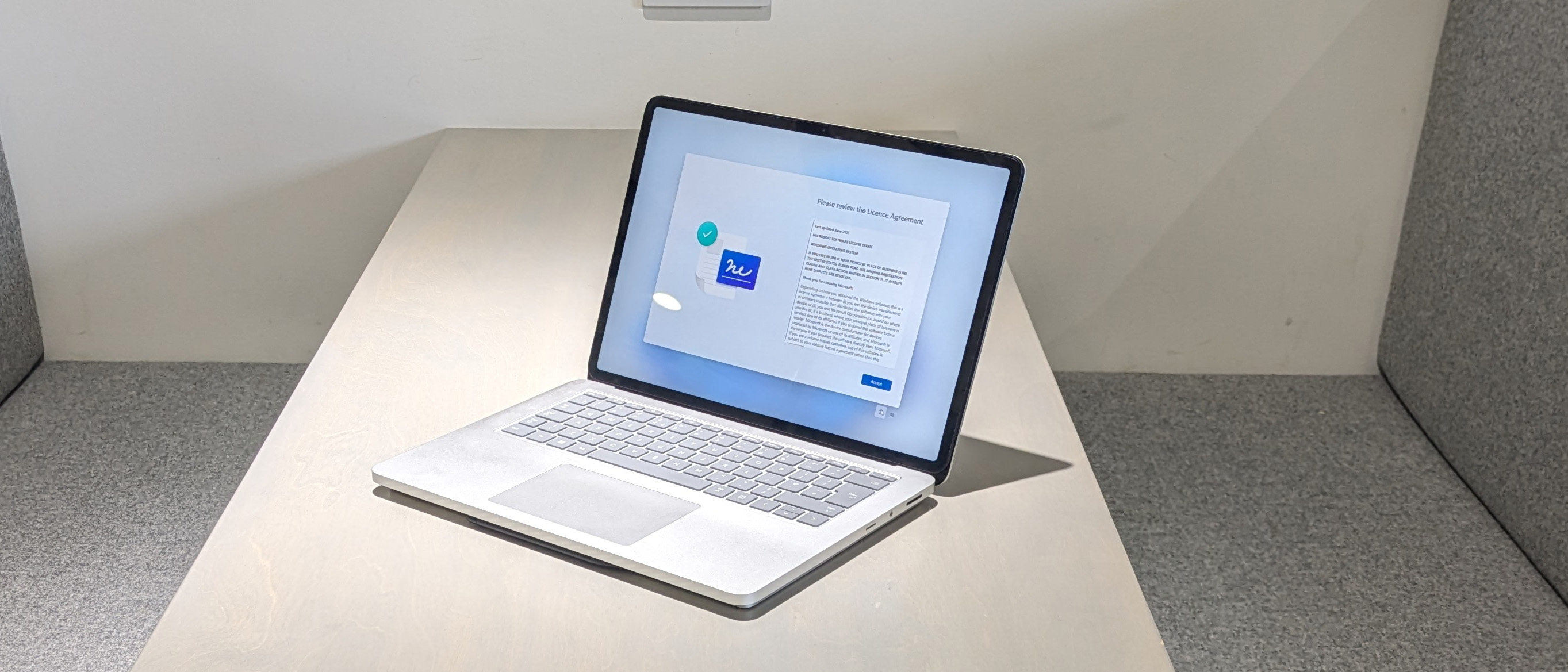
-
+
Top-notch keyboard and touchpad
-
+
Impressive performance and battery life
-
+
Innovative design paired with premium build quality
-
-
Expensive
-
-
Heavy for a laptop/tablet crossover device

READ MORE
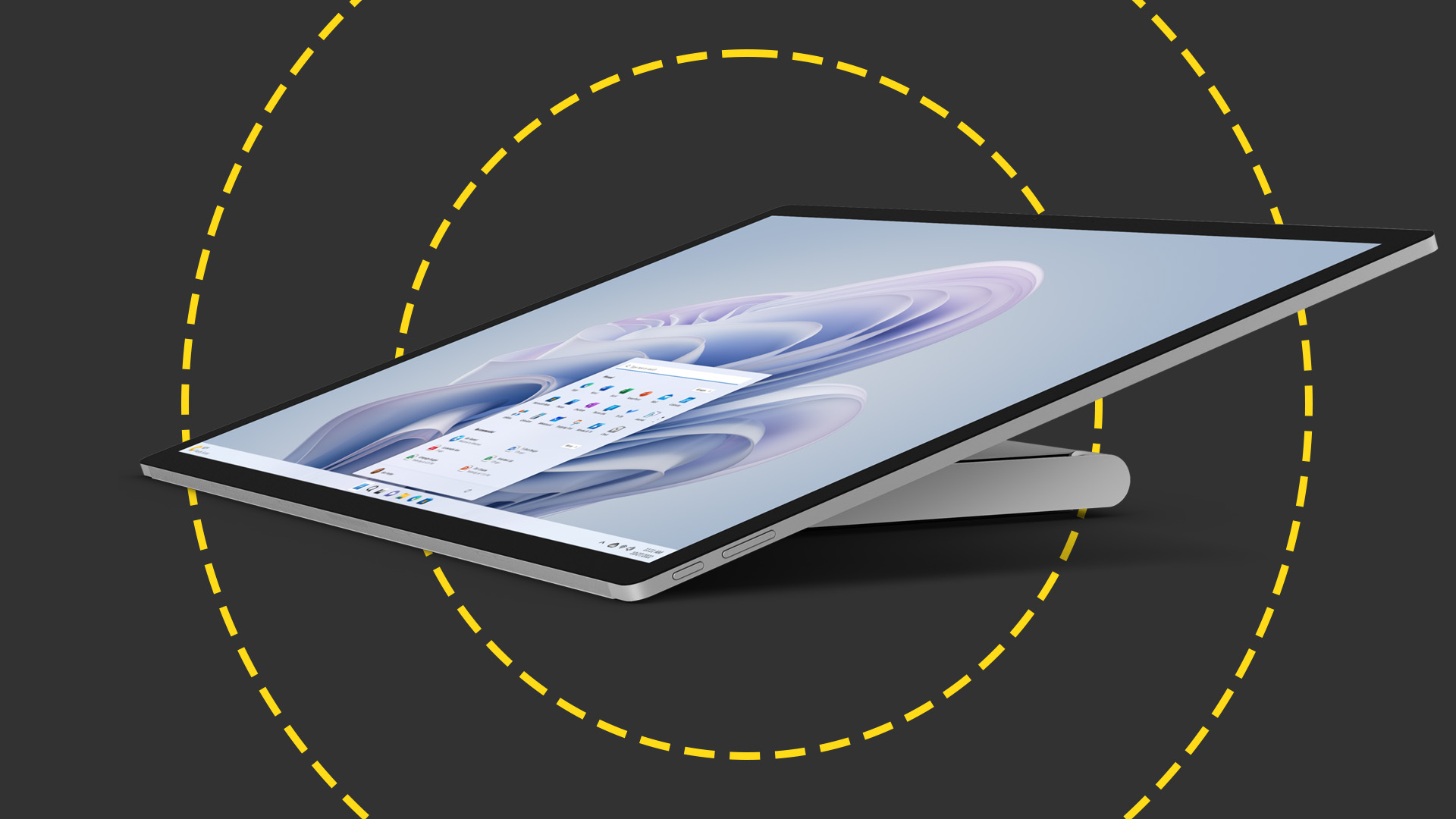
Microsoft's Surface lineup has always featured some of the most premium materials and exciting innovations in Windows laptop design ever seen, and the Surface Laptop Studio 2 is no exception.
With this device it feels like Microsoft is making good progress towards creating an ecosystem of devices that combine flagship performance with a luxurious finish but at what cost?
The Surface Laptop Studio 2 is an impressive device in terms of its performance and design, but this comes at the expense of affordability; it presents a tough sell for organizations who perhaps won't need all the bells and whistles the Studio 2 has to offer.
Microsoft Surface Studio Laptop 2: Design
The Surface Laptop Studio 2 boasts one of the more interesting laptop designs we have seen in a while, inheriting the unique dual-hinge mechanism of its predecessor.
The second hinge halfway up the display allows for the screen to pivot forward into a number of different orientations. Pushing the top of the display will magnetically unclip the lower half of the display from the rear shell and allow it to be pulled forward into 'stage mode'.
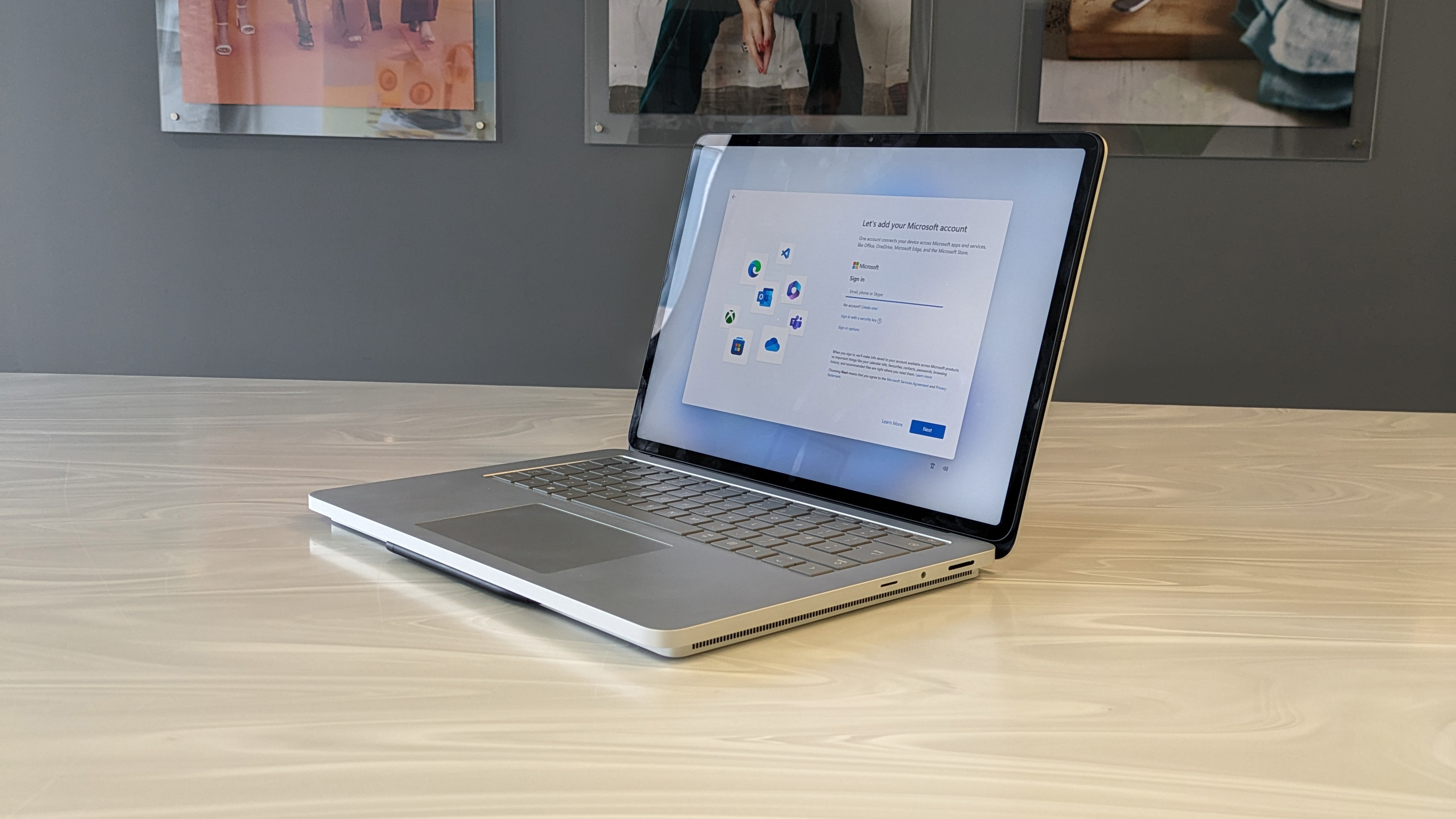
Stage mode involves bringing the display forward over the keyboard and positioning it just above the trackpad where a magnetic strip holds it in place. This orientation lends itself to consuming or presenting content, for example, this could prove useful for meetings where users can quickly flip their devices around and present a slide deck.
Drawing the display forward again takes it almost flush to the keyboard in what Microsoft calls 'studio mode'. This orientation is designed to be used with the Surface Slim Pen 2, more on this later, where the display sits over both the keyboard and trackpad and can be used like a tablet.
What makes the Surface Laptop Studio 2's flexible design enjoyable to use is the premium build quality throughout. The anodized aluminum chassis feels high-end to the touch and solid in the hand. Strong magnets are strategically placed to lock the laptop into its various orientations and even hold the Slim Pen 2 in a handy location just under the front lip of the base.
This solidity is important when trying to use the device in its traditional laptop orientation or stage mode, where screen wobble would ruin the experience of interacting with the touch display. The combination of the flexible design with its premium build quality means the Studio 2 offers true versatility without sacrificing traditional functionality.
Microsoft Surface Studio Laptop 2: Display
The Surface Laptop Studio 2 has a beautiful 14.4in touchscreen display. The 2,400 x 1,600 LCD display has a pixel density of 200 PPI and compared well to the Retina display of a 2019 Macbook which technically has a pixel density of 226 PPI.
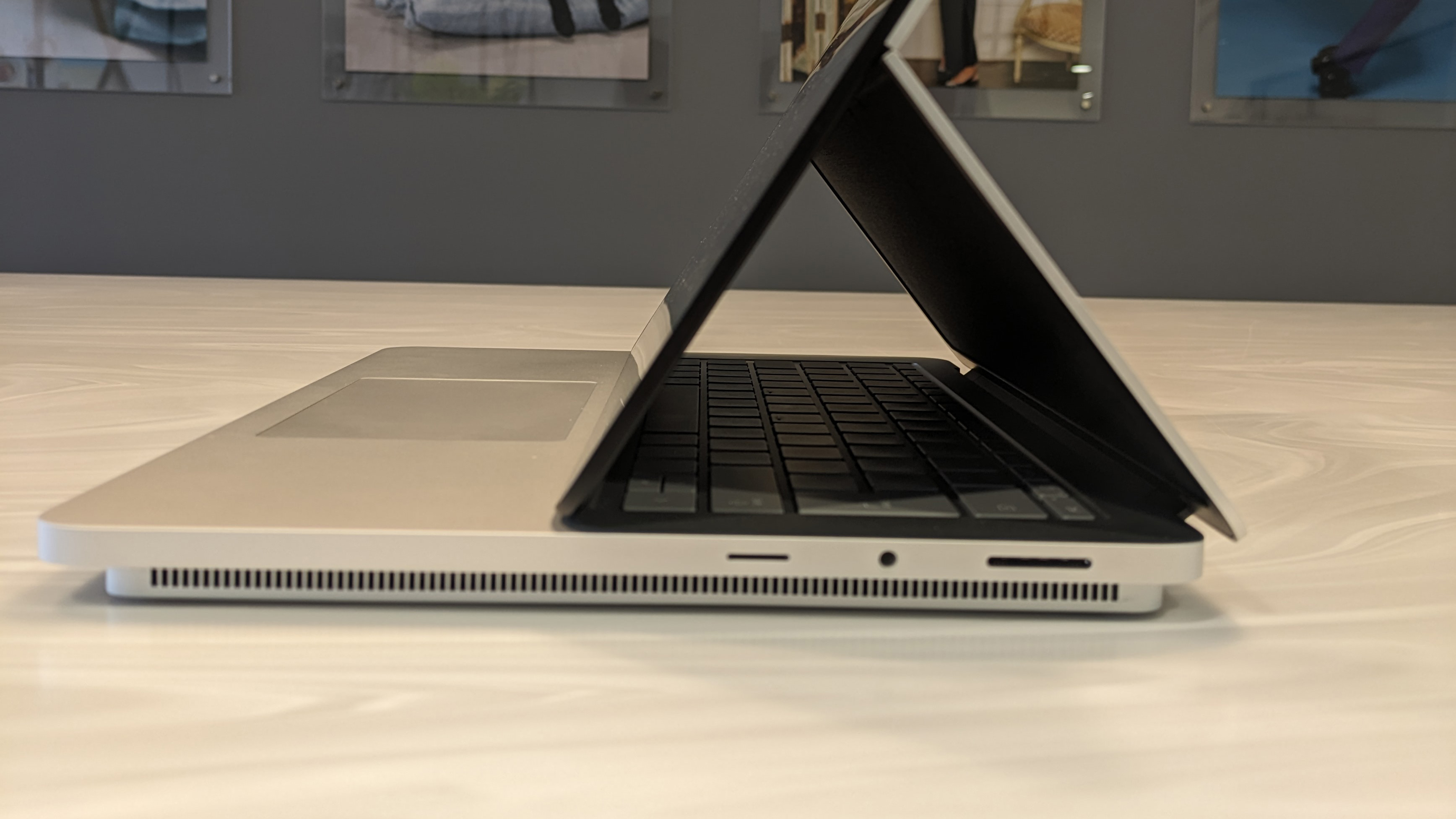
The display got plenty bright and had no problem with recreating vivid colors. When tested the display reached an impressive maximum brightness of 503 cd/m2 which is more than enough for indoor and most outdoor settings.
The sRGB coverage level of 97.5% is impressive and when paired with the device's stylus integration and studio mode orientation, this device would make a great video/photo editing machine.
The 120Hz refresh rate makes navigating around the operating system feel very responsive and, when paired with the top-notch trackpad, scrolling on the Studio 2 is just buttery smooth. The 3:2 aspect ratio is great for productivity, for those of us who spend our days in spreadsheets and Google docs, the extra height helps massively with reading content online and squeezing a few extra lines of text or rows of cells on the screen
The display does feature rather sizable bezels that could be described as chunky by today's standards. Still, functionally these give you something to hold while using the device like a tablet when folded down into the studio mode, preventing accidental touches.
Microsoft Surface Studio Laptop 2: Keyboard and touchpad
The original Surface Laptop Studio featured a great keyboard and touchpad and Microsoft's latest Studio Laptop is no different. The backlit keys feature a soft touch coating and exhibit a good amount of key travel when actuated. Our only criticism here is the slightly muddy switches that don't quite finish with the satisfying snap or clunk you get with some competing laptops such as Apple's Magic keyboard.
The touchpad is where this device really shines. The touchpad on the Surface Laptop Studio 2 is expansive and super smooth, and its haptic feedback is flawless. As big as it is, it isn't quite as gargantuan as the touchpads featured on Apple's latest Macbooks, but it's close. We found the haptic feedback on the Surface Laptop 2 Studio's touchpad to be superior to the much-lauded Force Touch trackpad.
Microsoft Surface Studio Laptop 2: Specs and performance
The Surface Laptop Studio 2 is available for enterprise customers in a number of configurations. Microsoft allows customers to pick from 16 to 64 GB of LPDDR5x RAM and Gen 4 SSD storage options with capacities from 512 to 2 TB. Customers can also choose between Nvidia's RTX 4050 (6 GB GDDR6 vRAM), RTX 4060 (8 GB GDDR6 vRAM), 2000 Ada generation chip (8GB GDDR6 vRAM), or simply opt for the integrated Intel Iris Xe GPU.
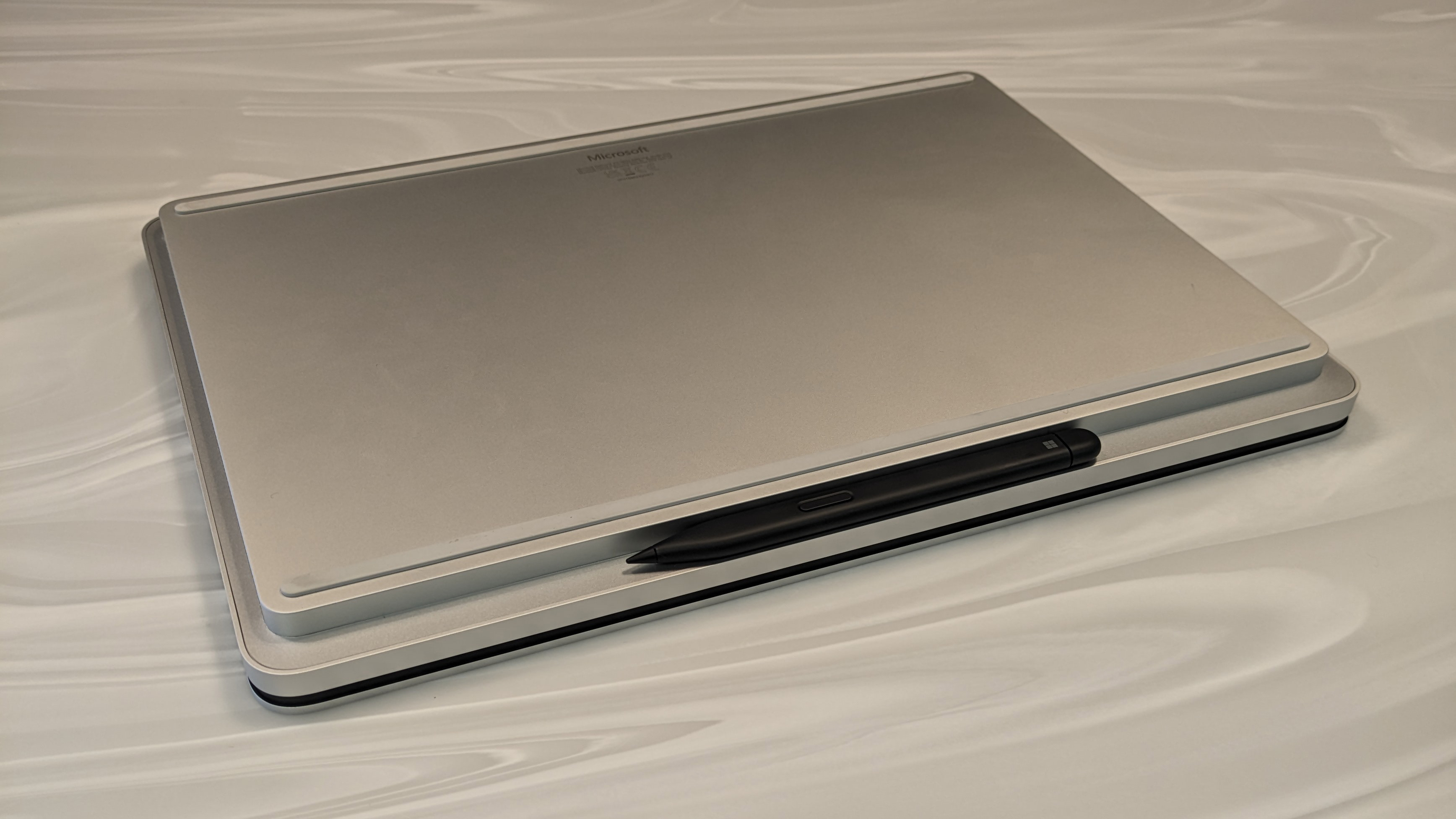
The unit provided to us by Microsoft was the top-spec model of its enterprise offering featuring a 13th Gen Intel i7-13800H Processor, an Nvidia RTX 2000 Ada Generation Laptop GPU, 64 GB of RAM, and a 2 TB SSD.
The device also features Intel's Gen 3 Movidius 3700VC VPU AI Accelerator for dedicated AI workloads. Microsoft says the Surface Laptop Studio 2's CPU and GPU this chip will be able to offload compute-hungry AI workloads onto the Movidius VPU, freeing up other heavy lifting for the traditional processors.
In our testing, the Surface Laptop Studio 2 scored an impressive 2,384 on the Geekbench 6 single-core CPU benchmark, and 11,899 on the multi-core test. This puts both its single and multi-core performance ahead of premium Windows laptops such as the Latitude 9440 (1,551 and 8,707) and the HP Spectre x360 (2,120 and 8,129), and very close behind the M1 Macbook.
The Nvidia RTX 2000 Ada edition performed well on the Geekbench 6 OpenCL benchmark with a score of 89,391, whereas the Intel Iris Xe notched up a score of 16,773. As a result we would recommend opting for a discrete GPU if you will need staff to work on any graphics-intensive tasks.
In day-to-day use the laptop felt super snappy, there were no hitches or lags when moving in and out of applications in our typical workflow. The 64GB of RAM meant multiple windows of chrome with 10+ tabs were lightwork for the Studio 2, and throughout our tests, we never heard the fans ramp up past anything above a light hum.
The battery life is often the problem area for many productivity-focused Windows laptops and as a result, we were pleasantly surprised by the Studio 2's performance. In our looped video test, the Studio 2 lasted 12hrs and 8mins which puts it ahead of the HP Spectre x360 and Dell Latitude 9440, and again not far behind the gold standard of Apple's M1 Macbook.
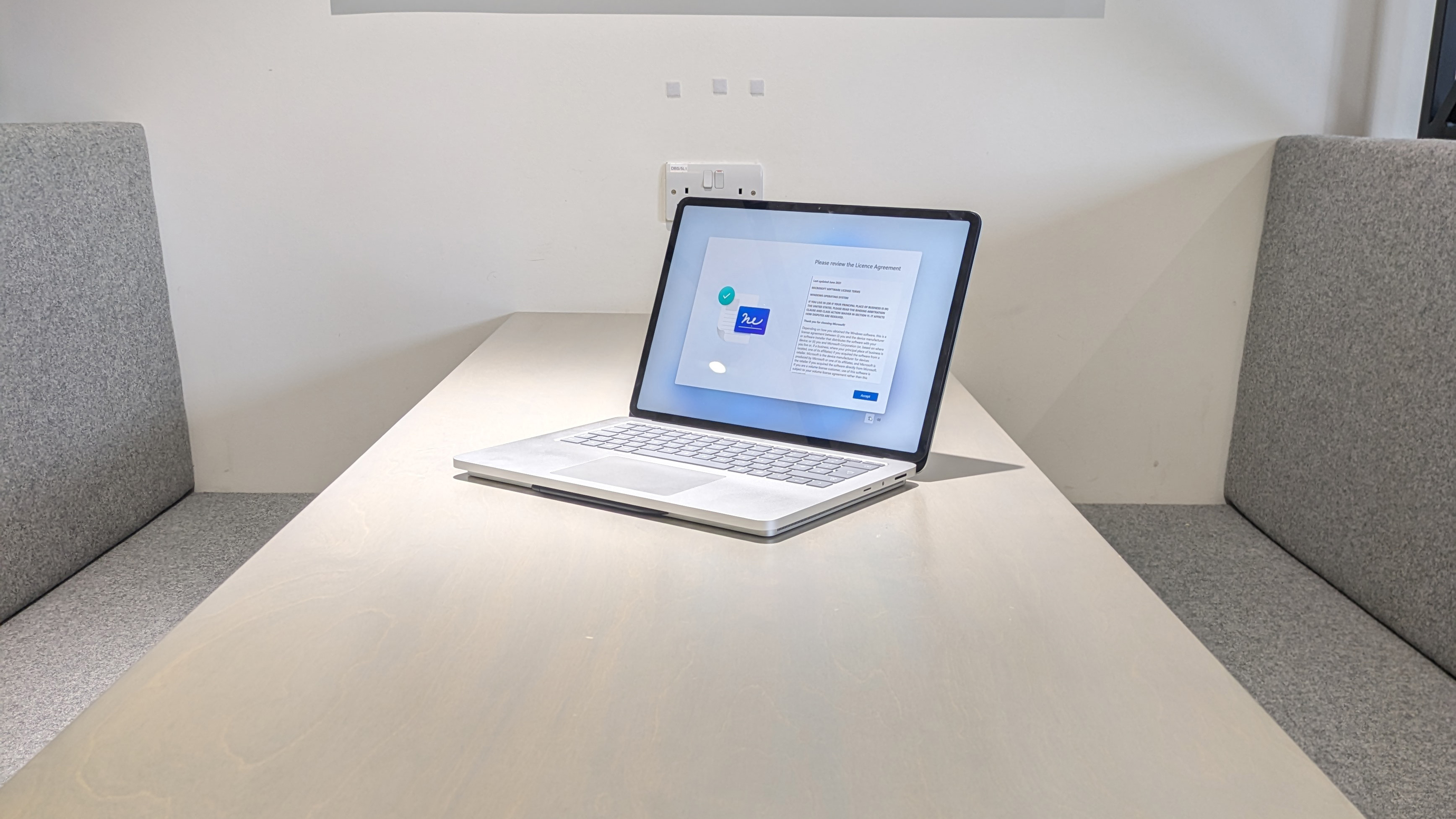
In day-to-day use, we found we could consistently get through a full workday on a single charge and still get back home with over 20% left in the tank.
Microsoft Surface Studio Laptop 2: Features
The second iteration of the Surface Laptop Studio boasts a helpful selection of ports including two USB-C Thunderbolt 4 ports with DisplayPort and Power Delivery functionality, a USB A 3.1 port, a MicroSDXC card reader, a 3.5 mm headphones jack, and of course Microsoft's proprietary Surface Connect port.
The inclusion of the USB A port is certainly useful for business applications where legacy devices and peripherals are still very common and the Surface Connect and Thunderbolt 4 both offer docking functionality.
The inclusion of the MicroSDXC card reader will be a godsend for creative workflows where offloading footage or images does not require carrying a proprietary cable for your camera around with you at all times.
A core feature of the Studio 2 is its support for the Surface Slim Pen 2. The Slim Pen 2 has a comfortable matte finish and two buttons, one for pairing and another where a traditional pencil's eraser would be which can be used to open specific applications.
We loved using the Slim Pen 2, it felt accurate and its haptic motor provides feedback as you write which makes for an immersive experience. It features over 4,000 pressure levels that allow for a wide range of stroke weights in drawing applications and also charges magnetically just below the front of the device's base unit.
Microsoft Surface Studio Laptop 2: Is it worth it?
The Surface Studio 2 successfully combines flexibility with a high-end design to offer a truly versatile professional computing experience. Its vivid display, quality touchpad and keyboard, and impressive performance and battery life make it a capable device when solely being used in its traditional clamshell form; but Microsoft's execution on the flexible design of the Studio 2 and its seamless stylus integration set it apart from other premium devices.
Despite this, the Studio 2 is a difficult device to recommend for enterprises where its various orientations provide limited functionality in business settings for the premium they add to the price. The most basic unit with 16 GB of RAM and a 512 GB SSD comes in at $2,099.99, whereas the unit we tested would set you back an eye-watering $4,499.99. Not only this, the Slim Pen 2 which is vital to getting the most out of the device's semi-detachable display, is sold separately for $103.99.
So unless your business is looking for a productivity device with capabilities for creative use cases, then you might be better served opting for a more traditional laptop that offers similar performance for a much more competitive price.
Microsoft Surface Studio Laptop 2 specifications
| Display | 14.4-inch 2,400 x 1,600 PCD, 3:2 aspect ratio, 120Hz refresh rate |
| Processor | Intel Core i7-13800H with intel Gen3 Movidius 3700VC AI accelerator |
| GPU | Nvidia RTX 2000 ADA generation laptop GPU with 8GB GDDR6 |
| RAM | vRAM 64GB DDR5 |
| Ports | Thunderbolt 4 x 2, USB-A 3.1, MicroSDXC card reader, 3.5mm audio jack, Surface connect port |
| Camera | 1080p 3.0 MP webcam |
| Storage | 2TB PCIe 4 SSD |
| Connectivity | Wi-Fi 6E (802.11ax), Bluetooth v5.3 |
| Weight | 1.98Kg |
Get the ITPro daily newsletter
Sign up today and you will receive a free copy of our Future Focus 2025 report - the leading guidance on AI, cybersecurity and other IT challenges as per 700+ senior executives

Solomon Klappholz is a former staff writer for ITPro and ChannelPro. He has experience writing about the technologies that facilitate industrial manufacturing, which led to him developing a particular interest in cybersecurity, IT regulation, industrial infrastructure applications, and machine learning.
-
 Westcon-Comstor and Vectra AI launch brace of new channel initiatives
Westcon-Comstor and Vectra AI launch brace of new channel initiativesNews Westcon-Comstor and Vectra AI have announced the launch of two new channel growth initiatives focused on the managed security service provider (MSSP) space and AWS Marketplace.
By Daniel Todd Published
-
 Third time lucky? Microsoft finally begins roll-out of controversial Recall feature
Third time lucky? Microsoft finally begins roll-out of controversial Recall featureNews The Windows Recall feature has been plagued by setbacks and backlash from security professionals
By Emma Woollacott Published
-
 The UK government wants quantum technology out of the lab and in the hands of enterprises
The UK government wants quantum technology out of the lab and in the hands of enterprisesNews The UK government has unveiled plans to invest £121 million in quantum computing projects in an effort to drive real-world applications and adoption rates.
By Emma Woollacott Published